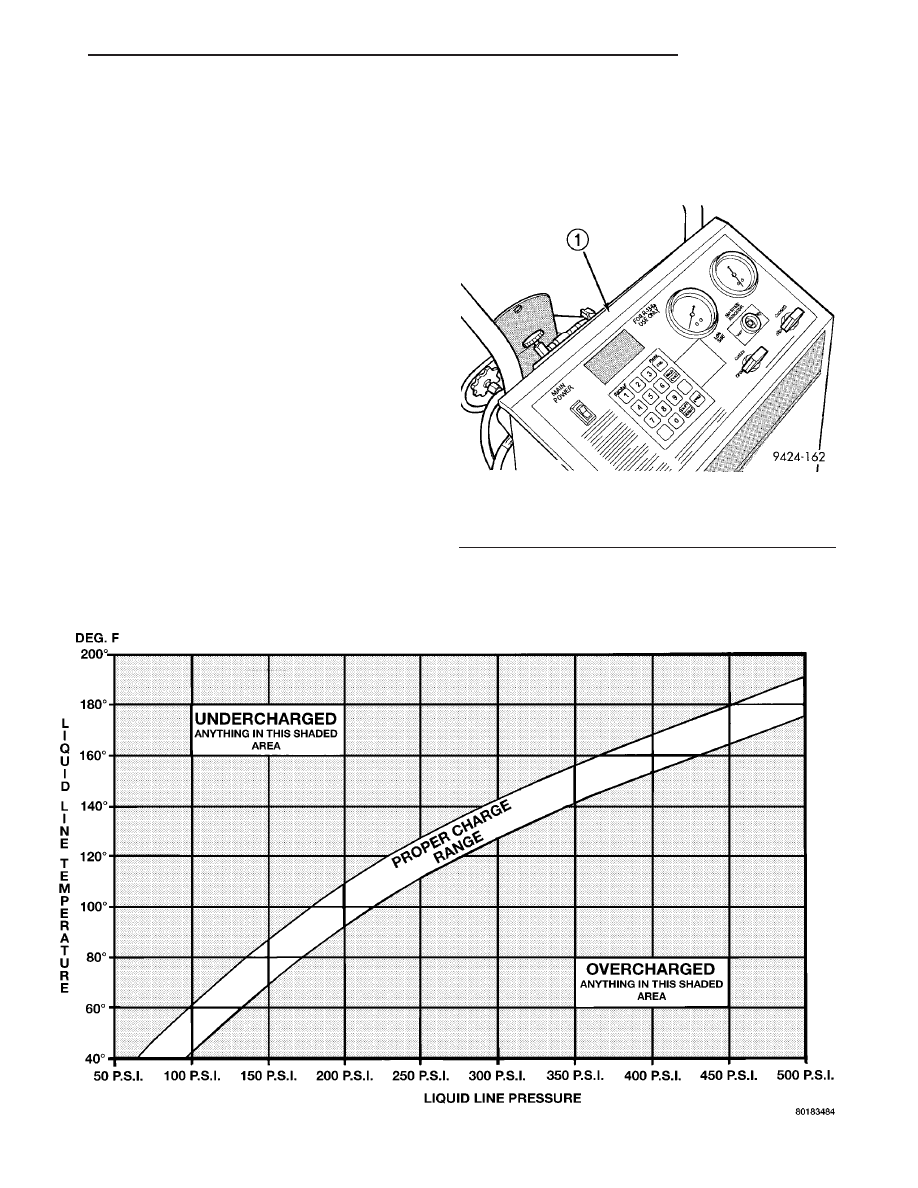Chrysler Pacifica. Manual - part 896

(6) Recheck the refrigerant system charge level fol-
lowing each refrigerant level adjustment. Continue
this process until the refrigerant system readings are
in the proper charge range area on the Charge Deter-
mination Chart.
STANDARD PROCEDURE
REFRIGERANT SYSTEM SERVICE EQUIPMENT
WARNING: Eye protection must be worn when servic-
ing an air conditioning refrigerant system. Turn off
(rotate clockwise) all valves on the equipment being
used before connecting to, or disconnecting from the
refrigerant system. Failure to observe these warnings
may result in personal injury or death.
WARNING: Review the warnings and cautions in the
front of this section before performing the following
operation (Refer to 24 - HEATING & AIR CONDITION-
ING/PLUMBING - WARNINGS) and (Refer to 24 - HEAT-
ING & AIR CONDITIONING/PLUMBING - CAUTIONS).
RECOVERY/RECYCLING STATION
When servicing the A/C system, a R-134a refrigerant
recovery/recycling/charging station that meets SAE
standard J2210 must be used (Fig. 2). Contact an auto-
motive service equipment supplier for refrigerant recov-
ery/recycling/charging equipment. Refer to the operating
instructions supplied by the equipment manufacturer
for proper care and use of this equipment.
Fig. 1 Charge Determination Chart (Ambient Test Condition 85° F)
Fig. 2 Refrigerant Recovery/Recycling Station -
Typical
1 - R-134a REFRIGERANT STATION
CS
PLUMBING
24 - 61
PLUMBING (Continued)